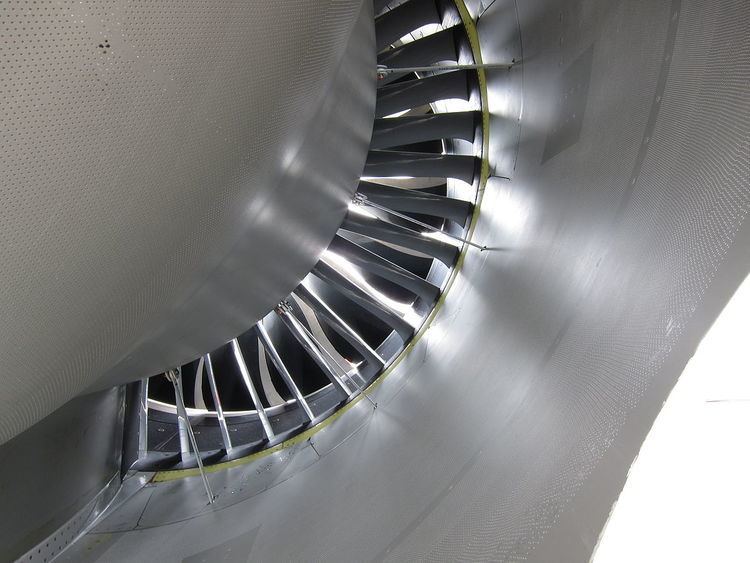 | ||
A bypass duct is an annular passage that allows some of a turbofan's airflow to bypass the engine core, or gas generator. If the turbofan is unmixed, the bypass duct will terminate at the bypass nozzle. In mixed turbofans, the bypass duct leads to the cold chute of a forced mixer or cold mixer of an annular mixer.
Some bypass ducts are unlined, so the bypass air must pass over a series of flanges, pipes, etc. associated with the engine core, which increases the bypass duct pressure loss. A lined bypass duct has a lower pressure loss, due to the streamlining effect of the inner wall introduced.
Bypass ducts may be fitted with doors that allow the air to be diverted forward, providing "reverse thrust". Air passing through an engine's core is not affected by this. This is common practice on high-bypass ratio turbofans found on airliners today, such as the GE CF6 and GE90, Rolls-Royce RB211 and Trent, Pratt & Whitney JT9D and 4000 etc. For a more detailed look at this issue, including consideration of different types of thrust reversal, see the thrust reversal page.
